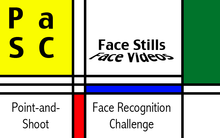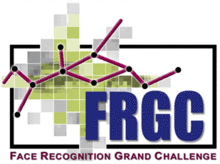Description
Face Technology Evaluations - FRTE/FATE
To bring clarity to our testing scope and goals, what was formerly known as FRVT has been rebranded and split into FRTE (Face Recognition Technology Evaluation) and FATE (Face Analysis Technology Evaluation). Tracks that involve the processing and analysis of images will run under the FATE activity, and tracks that pertain to identity verification will run under FRTE. All existing participation and submission procedures remain unchanged.
Face Recognition Vendor Test (FRVT) Demographic Effects Report
A new Face Recognition Vendor Test (FRVT) report released on December 19th, 2019, describes and quantifies demographic differentials for contemporary face recognition algorithms. NIST has conducted tests to quantify demographic differences for nearly 200 face recognition algorithms from nearly 100 developers, using four collections of photographs with more than 18 million images of more than 8 million people.Using both one-to-one verification and one-to-many identification algorithms submitted to NIST, the report found empirical evidence for the existence of a wide range of accuracy across demographic differences in the majority of the current face recognition algorithms that were evaluated.
Measuring the accuracy of facial forensics comparisons
Results of the study “Measuring the accuracy of facial forensics comparisons” have been accepted to the Proceedings of the National Academy of Sciences. The paper “Face Recognition Accuracy of Forensic Examiners, Superrecognizers, and Algorithms” appeared 29 May 2018 (https://doi.org/10.1073/pnas.1721355115). This article is open access, meaning it can be downloaded without any fee or subscription.
The reference is:
P.J. Phillips, A.N. Yates, Y. Hu, C.A. Hahn, E. Noyes, K. Jackson, J.G. Cavazos, G. Jeckeln, R. Ranjan, S. Sankaranarayanan, J.-C. Chen, C.D. Castillo, R. Chellappa, D. White, and A.J. O’Toole. Face Recognition Accuracy of Forensic Examiners, Superrecognizers, and Algorithms. Proceedings of the National Academy of Sciences, DOI:10.1073/pnas.1721355115, May 29, 2018.

Face Recognition Vendor Tests (FRVT)
Face Recognition Vendor Tests (FRVT) provide independent government evaluations of commercially available and prototype face recognition technologies. These evaluations are designed to provide U.S. Government and law enforcement agencies with information to assist them in determining where and how facial recognition technology can best be deployed. In addition, FRVT results help identify future research directions for the face recognition community.

Point and Shoot Face Recognition Challenge (PaSC)
The goal of the Point and Shoot Face Recognition Face Recognition challenge (PaSC) is to assist the development of face and person recognition algorithms. The challenge focuses on recognition from still images and videos captured with from digital point and shoot cameras.
Face and Ocular Challenge Series (FOCS)
The goal of the Face and Ocular Challenge Series (FOCS) is to engage the research community to develop robust face and ocular recognition algorithms along a broad front. Currently the FOCS consists of three tracks: the Good, the Bad, and the Ugly (GBU); Video; and Ocular. These challenges are based on the results of previous NIST challenge problems and evaluations.
MBE - Multiple Biometrics Evaluation
MBE has three tracks: Portal, Video, and Still Face.

Multiple Biometric Grand Challenge
The primary goal of the Multiple Biometric Grand Challenge (MBGC) is to investigate, test and improve performance of face and iris recognition technology on both still and video imagery through a series of challenge problems and evaluation. The participation period has now ended, however, MBGC data is still available to researchers.

Face Recognition Grand Challenge (FRGC)
The Face Recognition Grand Challenge (FRGC) project was conducted and managed by Dr. P. Jonathon Phillips. The participation period has now ended, however, FRGC data is still available to face recognition researchers. The primary goal of the FRGC was to promote and advance face recognition technology designed to support existing face recognition efforts in the U.S. Government.
Face Recognition Technology (FERET)
The goal of the sponsored research was to develop face recognition algorithms. The FERET database was collected to support the sponsored research and the FERET evaluations. The FERET evaluations were performed to measure progress in algorithm development and identify future research directions.

